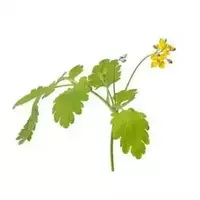Sweet root

The fragrant root evergreen shrub ("Ruta graveolens L. ") is a perennial plant that belongs to the Rutaceae family. This plant is distinguished by an erect, branched, woody stem, the height of which reaches up to 70 centimeters. Petiole leaves at the sweet root are distinguished by a sizeable green color. Small enough flowers are collected in brush-inflorescences. As the plant matures, fruits form on the plant - spherical four-sided boxes with small brown seeds, about one and a half millimeters long.
The countries of the Mediterranean consider the homeland of the root to be fragrant. To date, this aromatic plant is quite widespread - from the territories of Southern Europe to the very Canary Islands. In our country, fragrant root grows in the Crimea. The plant is deliberately cultivated in India, Iran, Algeria, Libya and the United States.
The food industry uses, as a rule, the essential oil of this plant, which is added to the main raw materials in the production of cognac and oriental liqueurs. In addition, this substance is widely used in the perfume industry.
Mainly in home cooking, leaves and seeds are used (more often dried) fragrant roots, which act as a fragrant spice. It is customary for them to season salads, vegetable dishes, braised lamb and meat fillings. In addition, a rather unusual, but original smell and taste acquires vinegar, flavored with fragrant rue.
As you know, this plant can be added to canned cucumbers and tomatoes, vegetable and fruit and berry cocktails. Especially harmonize with the root of fragrant sandwiches made of black bread with cream cheese and cranberry drinks, thanks to the savory bitterness of the plant. The norm for laying this spicy grass is 0. 1-0. 15 grams per serving.
In addition to gastronomic value, the medicinal properties of fragrant root are also important, which are enclosed, first of all, in its capillary-strengthening and anti-inflammatory actions. For example, in Italy and the United States, the herbal mass of fragrant root finds its use as an effective remedy for eye diseases.
Indian healers use it as an antiseptic, stimulating and abortive agent, and in China fragrant root is often used for amenorrhea, pneumonia, epilepsy in children, as well as headaches that are associated with vascular spasm.
Quite often, this valuable plant is part of the medicinal collections that are used in exhaustion or rheumatism. In alternative medicine, decoctions of fragrant root are recommended for hysteria, loss of strength, menstrual disorders, stomach cramps.
However, this plant must be used carefully, since in large doses fragrant root can cause poisoning, and when used externally, cause burns.
fragrant roots 0 kCal
The energy value of sweet root (Ratio of proteins, fats, carbohydrates - ju):
Proteins: 0 g (~ 0 kCal)
Fats: 0 g (~ 0 kCal)
Carbohydrates: 0 g (~ 0 kCal)
 Español
Español Français
Français Português
Português Русский
Русский 简体中文
简体中文 繁體中文
繁體中文 日本語
日本語 한국어
한국어 العربية
العربية Türkçe
Türkçe Қазақ
Қазақ Deutsch
Deutsch Italiano
Italiano Українська
Українська
